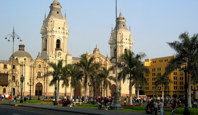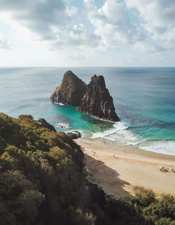
Lima
Enjoy the world class cuisine and colonial history of Peru's capital
Please upgrade your browser for modern web functionality, a better user experience and improved security.
Upgrade my browserDiscover momentous ancient, colonial and modern history in South America's diverse collection of fascinating cities.
South America's great cities have histories stretching back hundreds of years to the times of Spanish and Portuguese conquest, some even further. They have been the epicentres of colonial rule, homes of royalty and viceroyalty, and the sites of revolutions, independence movements, dictatorships and the establishment of democracy. Their links with Europe throughout the colonial period imported sophisticated Spanish culture to much of South America, and Portuguese culture to Brazil. This has left many of the cities with well established artistic and cultural heritages, magnificent cathedrals and palaces, and universities.
The first great city in Brazil was Salvador, on the north eastern coast of Bahia. Founded in 1549, it was Brazil's first capital, and because of its location was one of the main ports for trade with Europe and the Portuguese empire. The state of Bahia was one of the richest in Brazil, through its production of sugarcane and tobacco. Rio de Janeiro, now a cosmopolitan metropolis known for its beaches, was from 1808-1821 the capital of the Portuguese empire. This move paved the way for a number of royal palaces to be built, and enhancing the city's culture, fine arts and architecture - a legacy which can still be seen today. This importance led to Rio remain the capital of Brazil through its independence, until 1960 when it was transferred to the newly built city of Brasilia.
In Peru, the city of Lima was founded in 1535 on the site of a much older settlement, evidenced by the adobe pyramid of Huaca Pucllana dating to around 200-700 AD. It was named 'The City of Kings', and became the administrative centre of the Viceroyalty of Peru, and wealthy through the trade of silver and gold passing through its sea-port at Callao. Remains of the lavish colonial period can be seen in the old city's palaces, cathedral, and convents, while the later Republican period is characterised by highly ornate wooden balconies on the outside of the buildings. Meanwhile, Cusco was also conquered by the Spanish invaders, who took the opportunity to loot the precious metals from the Inca temples and palaces. They were able to destroy many of the Inca buildings and use their foundations to build their own houses, churches and convents. Cusco became a wealthy city through agriculture, cattle farming, and mining for precious metals. It was also an important religious centre in the Andes, drawing many artists and craftsmen to work for the church, leading to an artistic style known as the Cusco school. Paintings in this style can still be seen in galleries and churches throughout Cusco.
Find inspiration from our selection of itinerary suggestions, a great starting point for your next trip
View More Tours
Infuse your travels, with inspiration from our monthly newsletter.
LANDMARK TOURS: Multi-Country & Cross Continent. New Cosmopolitan Tour: Buenos Aires, Iguazu, Rio
CHINA & INDIA: Local Life, People & Unique Cultures
GUIDES by Veloso Tours, are the best Local Hosts
PRIVATE VILLAS: Quality Time in exclusive settings
TRAVEL INSURANCE with extensive COVID-19 cover